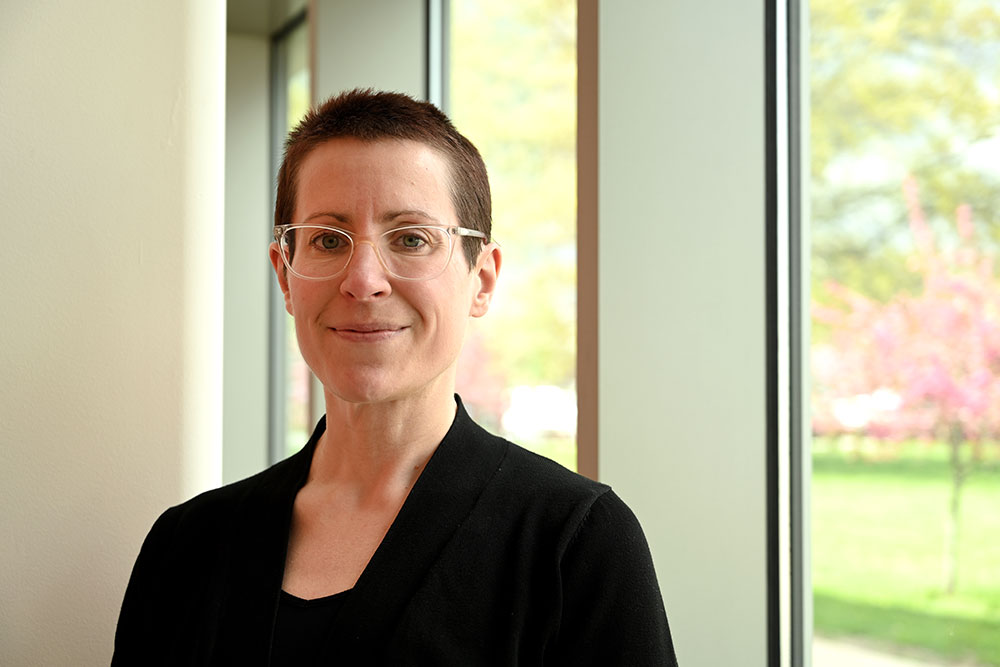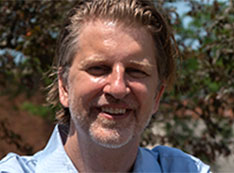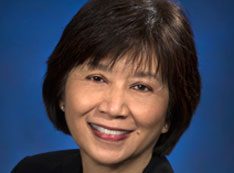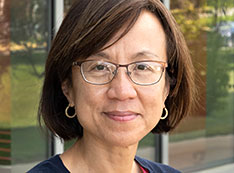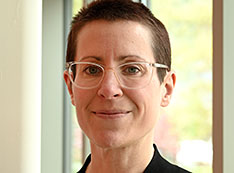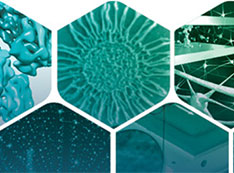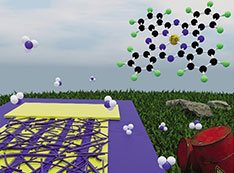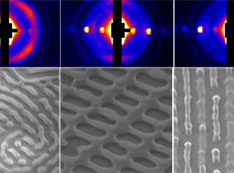Using Computation and Theory to Enhance Nano-Agriculture and Beyond with Sara E. Mason
interview with a CFN Group Leader
May 17, 2023
Sara E. Mason joined the Center for Functional Nanomaterials (CFN), a U.S. Department of Energy Office of Science User Facility at Brookhaven National Laboratory, in September of 2022 as the CFN Theory & Computation group leader. Sara seeks to foster growth within the group by bringing in her research interests, which include sustainable nanotechnology and energy storage, and 12 years of teaching experience as a professor at the University of Iowa. She is also keenly interested in enhancing the spirit of diversity, acceptance, wellness, and collaboration at CFN.
What kind of research are you interested in? How will you continue this work as a CFN scientist?
Since 2015, I have been partnered with a National Science Foundation (NSF) Center for Chemical Innovation, the NSF Center for Sustainable Nanotechnology (CSN). It’s a large collaboration, and they have a large goal understand the unintentional negative impact of nanotechnology on the environment.
One of my projects with CSN has been looking at the nanomaterials in rechargeable batteries and what happens when they are disposed of improperly. How do they transform in the environment and go on to have a negative impact? This research aligns well with the interests of CFN, which looks at how nanomaterials function under operando conditions.
I have been able to get a subcontract for my work on the project to continue at CFN through 2025. I’m in the process of hiring a postdoc to work with me on the project. We’re using theory and modeling to learn how materials come apart and release toxic chemical species that can kill organisms. We’re looking all the way down to the atomic scale and all the way up to the macroscopic level. “From atoms to organisms,” we like to say. I’m very excited to continue this project and hope it will lead to spinoff studies that will incorporate some of the expertise here at CFN.
One possibility we’re particularly excited about, related to the degradation of battery materials and the resulting toxicity, is how to harness that same process beneficially in “nanoagriculture.” Nanomaterials can be used to foster the health of crop plants, provide nutrients to the plants, and even treat plant diseases.
One of my collaborators at CSN is the director of the Connecticut Agricultural Experiment Station, Dr. Jason White, and I was recently able to host him here in person to give a seminar. He told us that other CSN researchers can take nanomaterials that are synthesized to have a certain composition or shape, and then Jason’s team can put them directly on the leaf of the plant. And this can be done for an affordable cost, which is so important when we are looking at a global problem like food.
I worked on a paper a couple of years ago with Jason; it was a study of soybean plants that were treated with nanomaterials to possibly cure disease. We were able to do quantum mechanical calculations and relate those results to the trends they saw in the diseased plants. That was just one study we did together, and I’m definitely looking to build and grow that partnership, hopefully bringing in other groups at CFN to leverage our capabilities through the User Program. A big need we have is further surface characterization of the nanomaterials under different operating conditions, which ties into CFN expertise.
Another project that I’m bringing to CFN is one that began last summer. I am co-PI on a DOE grant to study carbon capture using a uranyl-based catalyst with one of my University of Iowa colleagues, Prof. Tori Z. Forbes. She looks at heavy-element complexes with uranium and neptunium (her group is one of the very few in the world that study neptunium). We wrote a user proposal and have co-advised Ph.D. students, so this new project and our ongoing collaboration on heavy-element complexes are now both part of a user project at CFN.
What drew you to CFN?
One of the things that appealed to me about coming to CFN is its collaborative environment. Nanoscience is something that inherently brings together scientists with diverse expertise, and that is congruent with how I have always conducted my research. I am used to working with teams of many other scientists, and most of my papers involve not only multiple authors but multiple groups. That’s very natural to me.
I’m also excited about being able to interact with and train new users. I have 12 years of experience as a professor, so I like that I can continue to be able to teach people and use my teaching skills in a new way. I think that skill will translate well to the kind of user that wants to do theory but needs some guidance.
How are you making this role your own?
My point of view is that I am the representative of the Theory and Computation group – I am among my peers. I get to bring our ideas to the upper level of CFN as well as bring in some outside perspective from my time in academia at the University of Iowa. As a team, we are looking to really build up this group and find new ways of working together.
I’ve always felt that representation is important, and I bring that to this role. Although I spent the last 12 years as a professor, I had a somewhat non-traditional educational past: I’m a community college graduate, which is uncommon for scientists. I am grateful for my associates degree, as I came out on the other side a new person. Prior to that, I wasn’t a good student and didn't really know what I wanted, but I knew that I wanted to find a way to be employable. I had been working in food service prior to that, and that’s a hard way to pay the bills.
I’m also a nonbinary queer person. I have long identified as queer, and for a decade at the University of Iowa I was a trainer for the university’s Safe Zone program, which was designed to create safe spaces for LBGTQIA+ people. In recent years the program expanded further into gender identities, and I realized that when I was growing up, I didn’t have these options. I felt such a sense of relief. I was teaching this to other people and was myself having a deep personal realization, even though I’d long been out as a queer person in science and as a professor.
I’d like to share a really incredible conversation I had with a colleague at CFN not long after I arrived here. I have a 5-year-old and an 8-year-old, and I was talking about being a nonbinary and queer parent. I mentioned that I can “blend in” when I want to. She said to me, “But you choose not to. You come as your authentic self.” It really got to me. It really made me feel good about being able to continue that aspect of myself here at CFN. This is a place where you can show up as your true self. This is a place where you can work as your true self.
I’m really interested in helping to bring an element of humanity to this workplace. During the NSLS-II, CFN, & LBMS Users’ Meeting last month, I co-hosted a workshop, “Working Toward Wellness, Equity, & Liberation in a Nanoscience Center: Sharing Lessons Learned and Discussing Future Ideas.” We talked about how to think about wellness holistically, and how we can improve our work climate by focusing on the individual. As scientists, we revise our thinking when presented with new data. In the same way, we can share some of the practices that we have found to be successful to create and sustain a culture of wellness.
Brookhaven National Laboratory is supported by the Office of Science of the U.S. Department of Energy. The Office of Science is the single largest supporter of basic research in the physical sciences in the United States and is working to address some of the most pressing challenges of our time. For more information, visit science.energy.gov.
Follow @BrookhavenLab on Twitter or find us on Facebook.
2023-21275 | INT/EXT | Newsroom




